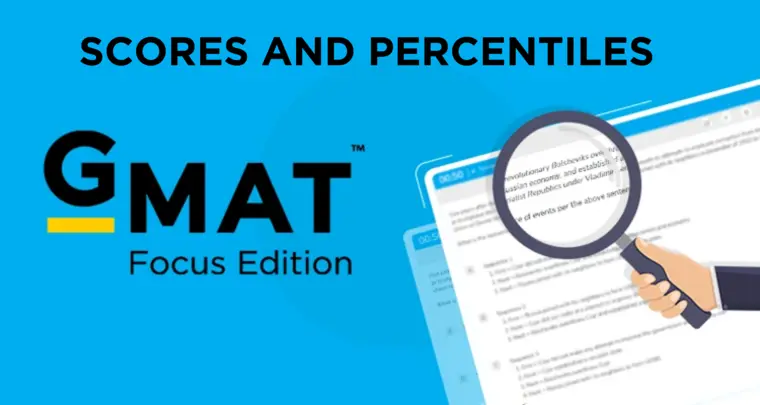This passage is excerpted from material published in 1997. Is there a massive black hole at the center of our galaxy, the Milky Way? The evidence is inconclusive.
(5) Just as the Sun’s mass can be determined, given knowledge of other variables, by the velocity at which its planets orbit, the mass at the center of the Milky Way can be revealed by the velocities of stars and gas orbiting the galactic center. This dynamical
(10) evidence, based on recently confirmed assumptions about the stars’ velocities, argues for an extremely compact object with a mass two to three million times the mass of our Sun. Although according to current theory this makes the mass at the center
(15) of the galaxy too dense to be anything but a black hole, the relative lack of energy radiating from the galactic center presents a serious problem. A black hole’s gravity attracts surrounding matter, which swirls around the black hole, emitting some energy
(20) as it is engulfed. Scientists believe that the amount of energy that escapes the black hole should be about 10 percent of the matter’s rest energy (the energy equivalent of its mass according to the equation E=mc^2). But when the energy coming from the
(25) galactic center is compared to widely held predictions based on how much matter should be falling into a theoretical central black hole, there is a discrepancy by a factor of a few thousand.
Question 1
The primary purpose of the passage is to
A. present several theories that could account for a particular phenomenon
B. argue that a certain question needs to be reframed in light of new evidence
C. resolve an apparent inconsistency between two lines of evidence
D. explain why a certain issue remains unresolved
E. present evidence that calls into question certain assumptions of a current theory
Question 2
According to the passage, the dynamical evidence referred to in lines 9–10 supports which of the following?
A. Recent assumptions about the velocities of stars
B. Widely held predictions about the amount of matter a black hole will engulf
C. The existence of an extremely dense object at the center of the Milky Way
D. The contention that too much energy is coming from the mass at the Milky Way’s galactic center for that mass to be a black hole
E. The conclusion that a compact object of two to three million times the mass of our Sun is too dense to be anything but a black hole
Question 3
The “serious problem” referred to in line 17 could be solved if which of the following were true?
A. Current assumptions about how much matter a black hole would engulf proved to be several thousand times too high.
B. Current assumptions about how much matter a black hole would engulf proved to be a few thousand times too low.
C. The object at the center of the Milky Way turned out to be far more dense than it is currently estimated to be.
D. The object at the center of the Milky Way turned out to be far more massive than it is currently estimated to be.
E. Matter being engulfed by a black hole radiated far more energy than is currently assumed.
Question 4
The “widely held predictions” mentioned in line 25 are predictions about the
A. compactness of objects whose mass is millions of times the mass of our Sun
B. velocities of stars orbiting the galactic center
C. amount of matter swirling around the object at the center of the Milky Way
D. amount of matter falling into a theoretical central black hole
E. amount of energy that should be coming from a black hole at the center of the Milky Way
Solution
1. Passage Analysis:
Progressive Passage Analysis
| Text from Passage | Analysis |
|---|---|
| This passage is excerpted from material published in 1997. Is there a massive black hole at the center of our galaxy, the Milky Way? The evidence is inconclusive. | What it says: We’re investigating whether there’s a huge black hole at the center of our galaxy, but the evidence doesn’t give us a clear answer. What it does: Sets up the central question and immediately gives us the author’s conclusion – this is unresolved. Source/Type: Author’s assessment of the scientific evidence Connection to Previous Sentences: This is our opening – no previous connections yet. Visualization: Imagine scientists looking at the Milky Way’s center with telescopes, seeing some evidence that could suggest a black hole, but not enough to be certain. Reading Strategy Insight: The author tells us the conclusion upfront! This isn’t a mystery – we know the evidence will be mixed. What We Know So Far: There might be a black hole at our galaxy’s center, but evidence is unclear What We Don’t Know Yet: What is this evidence? Why is it inconclusive? |
| Just as the Sun’s mass can be determined, given knowledge of other variables, by the velocity at which its planets orbit, the mass at the center of the Milky Way can be revealed by the velocities of stars and gas orbiting the galactic center. | What it says: Scientists can figure out how much mass is at the galaxy’s center by measuring how fast things orbit around it, similar to how we measure the Sun’s mass by watching planetary orbits. What it does: Introduces the scientific method being used, with a helpful analogy to make it understandable. Source/Type: Scientific method/factual explanation Connection to Previous Sentences: This builds on the opening by explaining HOW scientists are investigating the black hole question. This is the first piece of “evidence” mentioned. Visualization: Solar System: Planets orbiting Sun at specific speeds reveal Sun’s mass = 1 sun mass. Galaxy Center: Stars and gas clouds orbiting at their speeds will reveal the central mass. Reading Strategy Insight: The author helps us with a familiar analogy (planets around the Sun) before introducing the more complex galactic concept. This is simplification, not new complexity. |
| This dynamical evidence, based on recently confirmed assumptions about the stars’ velocities, argues for an extremely compact object with a mass two to three million times the mass of our Sun. | What it says: Using the orbital speed method described above, scientists found something incredibly heavy (2-3 million times heavier than our Sun) packed into a very small space. What it does: Gives us the specific results of the orbital velocity method and emphasizes two key features: massive and compact. Source/Type: Scientific findings based on observational data Connection to Previous Sentences: This directly continues the orbital velocity explanation from the previous sentence. “This dynamical evidence” refers back to the velocity measurements just described. Visualization: Imagine our Sun (1 sun mass) vs. the galactic center object (2,500,000 sun masses) squeezed into a tiny space – like comparing a marble to a bowling ball, but the “bowling ball” is compressed to marble size. Reading Strategy Insight: We’re getting specific numbers now, but this is still following the logical flow: Method → Results. The evidence is pointing toward something that COULD be a black hole. |
| Although according to current theory this makes the mass at the center of the galaxy too dense to be anything but a black hole, the relative lack of energy radiating from the galactic center presents a serious problem. | What it says: Based on what we know about physics, something that massive and compact should be a black hole. But there’s a problem: not enough energy is coming from that area. What it does: Introduces the conflict that makes the evidence “inconclusive” – presents both sides of the puzzle. Source/Type: Scientific theory vs. observational evidence Connection to Previous Sentences: This builds directly on the mass/density findings from the previous sentence but introduces the contradiction that makes the opening statement (“evidence is inconclusive”) make sense. Visualization: Theory says: 2.5 million sun masses in tiny space = BLACK HOLE. Reality shows: Very little energy radiating from that spot (much less than expected from a black hole). Reading Strategy Insight: Now we see WHY the evidence is inconclusive! This isn’t new complexity – it’s explaining the contradiction mentioned in the opening. |
| A black hole’s gravity attracts surrounding matter, which swirls around the black hole, emitting some energy as it is engulfed. | What it says: When stuff gets pulled into a black hole, it spins around the black hole and gives off energy before disappearing. What it does: Explains the basic physics of how black holes should produce energy – sets up the explanation for why low energy is a problem. Source/Type: Established scientific understanding about black hole behavior Connection to Previous Sentences: This expands on the “lack of energy” problem from the previous sentence. The author is helping us understand WHY we should expect energy from a black hole. Visualization: Picture water swirling down a drain, but as cosmic matter spirals into the black hole, it heats up and glows, releasing energy that we should be able to detect with telescopes. Reading Strategy Insight: This is background explanation, not new evidence. The author is making sure we understand the physics before giving us the details of the problem. |
| Scientists believe that the amount of energy that escapes the black hole should be about 10 percent of the matter’s rest energy (the energy equivalent of its mass according to the equation E=mc^2). | What it says: Researchers think that black holes should release energy equal to about 10% of the mass of all the matter falling into them (using Einstein’s famous mass-energy equation). What it does: Provides the specific theoretical prediction for how much energy a black hole should emit. Source/Type: Scientific theoretical prediction Connection to Previous Sentences: This continues explaining black hole energy emission from the previous sentence, now giving us the specific numbers scientists use for their predictions. Visualization: If 100 pounds of matter falls into a black hole, we should detect energy equivalent to about 10 pounds of matter being converted to pure energy (E=mc^2). Reading Strategy Insight: We’re still building the “expected behavior” side of the equation. The author is systematically setting up the comparison that will show us the problem. |
| But when the energy coming from the galactic center is compared to widely held predictions based on how much matter should be falling into a theoretical central black hole, there is a discrepancy by a factor of a few thousand. | What it says: When scientists compare the actual energy they observe from the galaxy’s center to what they calculate should be there (if there was a black hole), the actual amount is thousands of times less than expected. What it does: Provides the specific magnitude of the problem – quantifies exactly how big the discrepancy is. Source/Type: Observational data compared to theoretical predictions Connection to Previous Sentences: This completes the comparison set up in previous sentences. We now have: Expected energy (10% of matter’s rest energy) vs. Actual observed energy (thousands of times less). Visualization: Expected energy from galactic center black hole: 10,000 units. Actually observed energy: 2-3 units. That’s the “factor of a few thousand” discrepancy. Reading Strategy Insight: This is the climax of the argument! Now we fully understand why the evidence is “inconclusive” from the opening. The passage has come full circle – everything connects back to that opening statement. What We Know Now: • Evidence FOR black hole: Mass and density measurements • Evidence AGAINST black hole: Energy output thousands of times too low • Result: Inconclusive evidence (exactly what the opening told us) |
2. Passage Summary:
Author’s Purpose:
To explain why scientists cannot definitively determine whether there is a massive black hole at the center of our galaxy by showing how conflicting evidence makes the question unresolvable.
Summary of Passage Structure:
In this passage, the author walks us through a scientific puzzle by presenting both sides of contradictory evidence:
- First, the author states upfront that the evidence about a galactic black hole is inconclusive
- Next, the author explains how scientists measure the mass at the galaxy’s center using orbital velocities and presents evidence that suggests something massive and compact enough to be a black hole
- Then, the author introduces the major problem with this conclusion by explaining that the energy output from the galactic center is far too low for a black hole
- Finally, the author quantifies exactly how big this energy problem is, showing that observed energy is thousands of times less than what theory predicts for a black hole
Main Point:
Scientists cannot definitively prove there is a black hole at the center of our galaxy because while the mass and density measurements strongly suggest a black hole, the extremely low energy output contradicts what we would expect from such an object.
3. Question Analysis:
The question asks us to identify what the “widely held predictions” mentioned in line 25 refer to. This is a specific reference question that requires us to understand the context around that phrase and trace back to what exactly scientists are making predictions about.
Connecting to Our Passage Analysis:
From our passage analysis, we can see that the final sentence builds a systematic comparison between expected and observed energy output. The passage analysis shows that the author has been building up to this climax by:
- First establishing the theoretical framework for how black holes should behave
- Then providing the specific prediction that black holes should emit about 10% of matter’s rest energy
- Finally comparing this prediction to actual observations
The passage analysis specifically notes that this final sentence “completes the comparison set up in previous sentences” and that we now have “Expected energy (10% of matter’s rest energy) vs. Actual observed energy (thousands of times less).”
Prethinking:
Looking at the context around line 25, the “widely held predictions” appear in this sentence: “But when the energy coming from the galactic center is compared to widely held predictions based on how much matter should be falling into a theoretical central black hole, there is a discrepancy by a factor of a few thousand.”
The sentence structure shows that these predictions are about energy output – specifically, the energy that should be coming from the galactic center if there’s a black hole there. The previous sentences established that scientists predict black holes should emit about 10% of the rest energy of matter falling into them. These predictions are being compared to the actual observed energy, creating the massive discrepancy that makes the evidence inconclusive.
Answer Choices Explained
A. compactness of objects whose mass is millions of times the mass of our Sun
Why It’s Wrong:
- The passage mentions compactness only as a finding from observational evidence, not as something being predicted
- The “widely held predictions” are specifically mentioned in the context of energy comparisons, not mass or density characteristics
- Scientists determined the object’s compactness through observation, they didn’t predict it
Common Student Mistakes:
- Did I confuse observational findings with theoretical predictions?
→ Remember that the passage distinguishes between what scientists observed (compact, massive object) versus what they predicted should happen (energy output) - Am I focusing on earlier parts of the passage instead of the specific context around line 25?
→ Always read the sentences immediately before and after the referenced line to understand the specific context
B. velocities of stars orbiting the galactic center
Why It’s Wrong:
- Stellar velocities are mentioned as the method scientists used to gather evidence, not as predictions
- The passage states these velocities are “recently confirmed,” indicating they are observational data, not predictions
- The “widely held predictions” phrase appears in a completely different context about energy output
Common Student Mistakes:
- Did I confuse the scientific method (measuring velocities) with the predictions being discussed?
→ Focus on what scientists are predicting versus what they are measuring or observing - Am I selecting an answer because velocities are mentioned in the passage without checking if it matches the specific question?
→ Always verify that your answer choice directly relates to the specific phrase or concept being asked about
C. amount of matter swirling around the object at the center of the Milky Way
Why It’s Wrong:
- “Matter swirling around” refers to the general process of how black holes work, not to specific predictions
- The passage mentions swirling matter as an explanation of black hole mechanics, not as something being predicted in specific quantities
- The predictions mentioned in line 25 are specifically about energy output, not about matter behavior
Common Student Mistakes:
- Am I conflating the general description of black hole behavior with the specific predictions being compared?
→ Distinguish between explanatory background information and the specific scientific predictions under discussion - Did I pick this because it sounds scientific and relates to black holes?
→ Make sure your answer directly addresses what the “widely held predictions” specifically refer to
D. amount of matter falling into a theoretical central black hole
Why It’s Wrong:
- While the predictions are indeed “based on how much matter should be falling into a theoretical central black hole,” this describes the basis for the predictions, not what is being predicted
- The question asks what the predictions are about, not what they are based on
- This choice confuses the input to the calculations with the output being predicted
Common Student Mistakes:
- Did I identify what the predictions are based on rather than what they predict?
→ Focus on the outcome of the predictions (energy) rather than the input used to make them (matter amounts) - Am I being misled by the phrase “based on how much matter should be falling into a theoretical central black hole”?
→ This phrase tells us the foundation for making predictions, but the predictions themselves are about energy output
E. amount of energy that should be coming from a black hole at the center of the Milky Way
Why It’s Right:
- The sentence containing “widely held predictions” is directly comparing observed energy to predicted energy output
- The previous sentences establish that scientists have theoretical expectations about energy emission from black holes
- The entire context around line 25 focuses on the energy discrepancy between prediction and observation
Key Evidence: “But when the energy coming from the galactic center is compared to widely held predictions based on how much matter should be falling into a theoretical central black hole, there is a discrepancy by a factor of a few thousand.”














